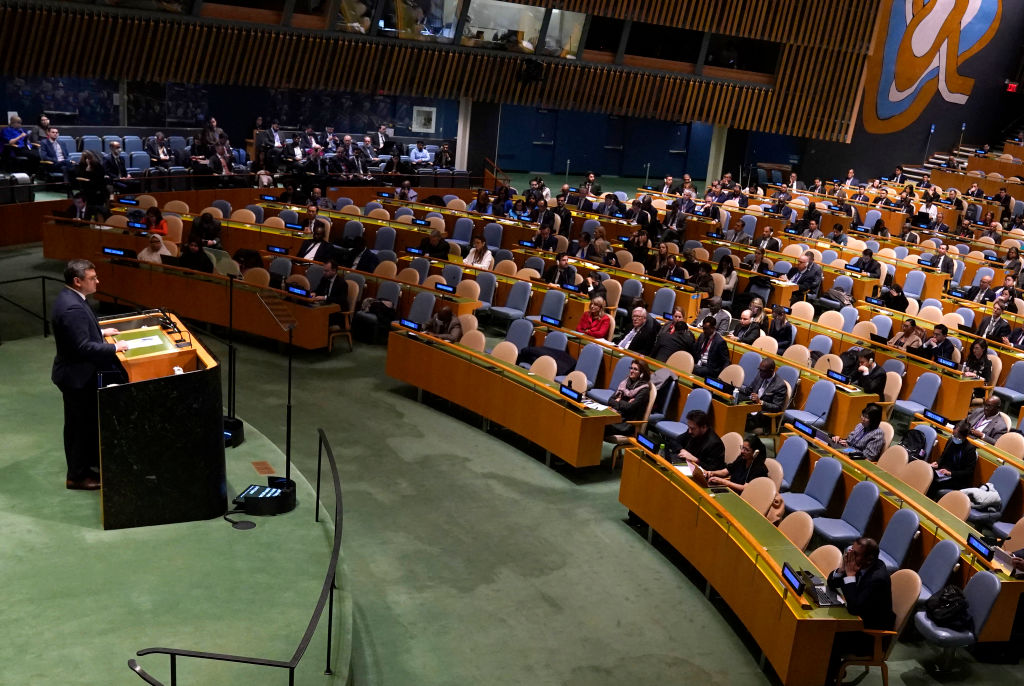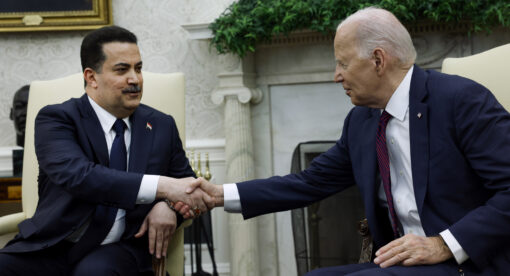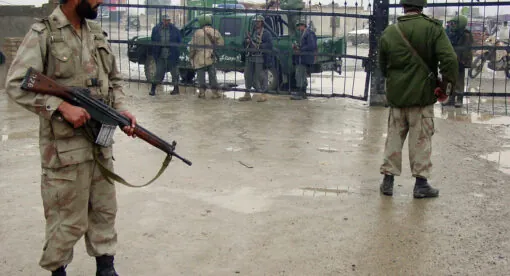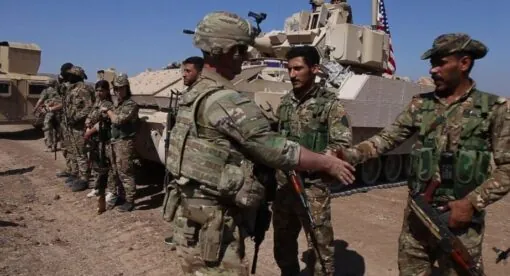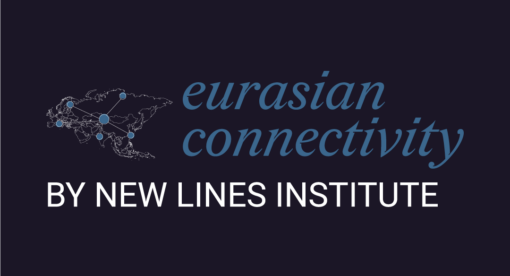A year after Russia’s invasion of Ukraine, there are few corners of the world or aspects of the international system the conflict has left untouched. The war has cost thousands of lives and driven the displacement of millions from Ukraine throughout Europe and beyond. It also has impacted the world economy, reshaping global energy flows and driving up inflation on key goods like food and fuel.
In the meantime, Ukraine has defied expectations by being able to withstand Russian military operations over the course of the year, in large part due to the backing of the U.S. and the West. However, the U.S. strategy to isolate Russia economically and diplomatically has been met with significant challenges, as a diverse collection of states that fall outside the pro-Western and pro-Russian dichotomy of the conflict – from Asia to Africa to Latin America – have maintained and in some cases even increased ties with Moscow since the start of the war and contributed to the Kremlin’s resilience to Western pressure. For the U.S. to be able effectively counter Russia’s designs in Ukraine and around the world, it is imperative that Washington and its allies approach such countries pragmatically and constructively rather than play into the “West vs. the rest” dynamic Moscow is trying to foster.
The West’s Dual Strategy
Since the start of Russia’s full-scale invasion of Ukraine in February 2022, there have been two basic pillars of the West’s strategy: support the defense of Ukraine and isolate Russia. The U.S. and its NATO allies have provided key weapons systems and logistical assistance for Ukraine, which has enabled the country to hold its ground against Russian forces and even retake some territory. In addition to the broader political and economic support from the West that has kept the country afloat, this military assistance has emboldened Ukraine, with Ukrainian President Volodymyr Zelenskyy and key defense officials making it clear that their objective is to reclaim all territory lost to the Russians – not only since the February invasion but going back to the start of the conflict in 2014, including Crimea.
Thus, the U.S. strategy to maintain support for Ukraine and solidarity between NATO as a whole has largely held over the course of the first year of the war and is being further cemented with more advanced weapons supplies from NATO countries, including Patriot missile systems and Leopard tanks. This could enable Ukraine to reclaim even more territory at the expense of the Russians in the coming months – though this effort will not come without challenges, including Russia’s renewed efforts to take more territory in southern and eastern Ukraine and the political reality that Western support is not guaranteed to last indefinitely.
The second pillar of the West’s strategy – isolating Russia from the international system – has proven to be more complicated. A key element of the Western isolation strategy concerns Russia’s energy sector. Given that Russia is a major producer and exporter of oil, natural gas, coal, and uranium and that energy revenues make up nearly half of Russian budget revenues, the U.S. and EU have sought to target this sector to deprive the Kremlin of such revenues, which in turn fuel Russia’s war in Ukraine and the broader Russian economy. Western countries have done so by increasing sanctions against Russia and cutting their own imports of Russian energy and diversifying to other sources. The U.S. stopped all imports of Russian energy shortly after the invasion of Ukraine, while the EU – which is traditionally much more reliant on Russian energy than the U.S. – has made plans to cut all Russian energy imports by 2027.
Russia’s Resilience
Despite these sanctions and the West’s diversification, the Russian economy has not collapsed. In 2022, Russia’s GDP fell by 2.2 percent, far short of many initial predictions. According to the IMF, Russia’s GDP is forecast to grow by 0.3 percent in 2023, which is significantly below the 4.0 percent growth average of Emerging Market and Developing Economies but also a sign that the Russian economy and political system are far more resilient than many observers predicted.
Energy has been a key part of this resilience. While the U.S. and EU have cut energy ties with Russia, many other non-Western states have stepped in to fill the void. China and India have increased their imports of Russian energy (the latter by five times) and have refused to sign on to Western sanctions against Russia. Turkey, despite its status as a NATO member and provider of drones and other weaponry to Ukraine, has also maintained economic, energy, and political ties with Russia. Even major energy producing countries like the Gulf states of Saudi Arabia and UAE have increased their purchases of Russian oil, utilizing it for domestic use while sending their (more expensive) energy exports to Europe, while snubbing the U.S. on subjects such as oil production due to tensions over other issues.
Despite their energy dynamics, these countries are not necessarily pro-Russian or anti-Western. Rather, these states are pursuing their own interests and positioning themselves to shape the ripple effects of the Russia-West standoff over Ukraine for their benefit. This is certainly the case economically, as the price cap that the G7 states have inflicted on Russian oil and natural gas supplies make it cheaper for energy-hungry countries like China and India to secure their imports from Russia, just as Gulf states can simultaneously help Europe diversify while increasing their energy ties with Moscow.
There is also a political dimension to the continuation of these countries’ relationship with Russia. While none of the states have spoken out in favor of Russia’s invasion of Ukraine, they have their own interests, which do not always conform to a U.S./Western-dominated global order. In this sense, there is a broader alignment over the desire for multipolarity among China, India, the Middle East, Africa, and Latin America, even if they may disagree over their respective roles in such a multipolar world. For them, the Ukraine conflict is in part a function of the U.S. and EU trying to undermine Russia as a challenger to the Western-led order and, along with preserving their own economic and political interests, this is not something they are willing to support in the manner and degree that the West would like. As long as that remains the case, the U.S. and EU strategy to isolate Russia from the international system will face significant constraints.
Rethinking U.S. Strategy
Russia’s economic and political stability throughout the conflict does not mean the West’s efforts to pressure and isolate the Kremlin have been completely in vain. Some measures will take time to make themselves felt, such as U.S. and EU sanctions that prohibit investment in Russia’s energy projects in the Arctic. This could impede Russia’s ability to develop future energy resources and restrict its access to key technologies.
The global threat of climate change and the transition to renewable energy could undermine Russia’s revenue sources in the future, not only from Europe but also from countries like China and India as well. However, this could take years, if not decades, to fully materialize, and the reality is that fossil fuels – including those from Russia – will continue to play a significant role in the global energy mix for quite some time. This, in turn, will continue to shape the extent to which the West can pressure Moscow and pursue its isolation effectively.
As such, there are several measures that the U.S. can take to refine its strategy vis-a-vis Russia. First, Washington must clearly communicate that its role in the Ukrainian conflict is not simply a battle between Russia and NATO for influence over Ukraine and Eastern Europe (the preferred narrative of the Kremlin) but rather that its support of Ukraine is in defense of a rules-based order. Similarly, the U.S. must counter Moscow’s narrative that the conflict is a U.S.-led proxy war in Europe with the goal of overthrowing Putin. The longer the war in Ukraine drags on, the more pressure there will be on the U.S. to clearly and coherently communicate its minimum requirements to get back to diplomacy.
Washington must also recognize that not every country shares the same interests as the U.S. and EU in supporting Ukraine and alienating Russia, and it must be more strategic and selective in its use of pressure tactics that target or impact non-aligned countries. As such, Washington should focus on constructive and tangible cooperation with countries that do not fit in the pro-Western or pro-Russian paradigm. The U.S. and its EU allies can work together with such countries toward addressing joint challenges related to climate change, including ensuring a stable and secure transition to green and renewable energy. The U.S. can leverage its unique technologies and expertise to enhance, for example, solar and wind energy production and efficiency in the Gulf while focusing on emerging resources like green hydrogen development in areas like Africa and Central Asia. Such clean energy partnerships will aid in the diversification of the energy mix and the improvement of power systems’ efficiency and cost-effectiveness while also contributing to the advancement of these countries’ peace and security.
Such efforts by the U.S. may not cause these states to abandon their ties with Russia, but they can lay the groundwork for a more practical form of cooperation between such states and the West while ensuring a smoother and more stable energy transition. This, in turn, will make clear the advantages of non-aligned countries working with the U.S. on addressing global challenges, to the benefit of Ukraine and well beyond.
Eugene Chausovsky is the Senior Director of Analytical Development and Training. Previously, he served as Senior Eurasia Analyst at Stratfor for 10 years. His work focuses on political, economic, and security issues pertaining to the former Soviet Union, Europe, and Latin America. He tweets at @EugeneChausovsk.
The views expressed in this article are those of the author and not an official policy or position of the New Lines Institute.

